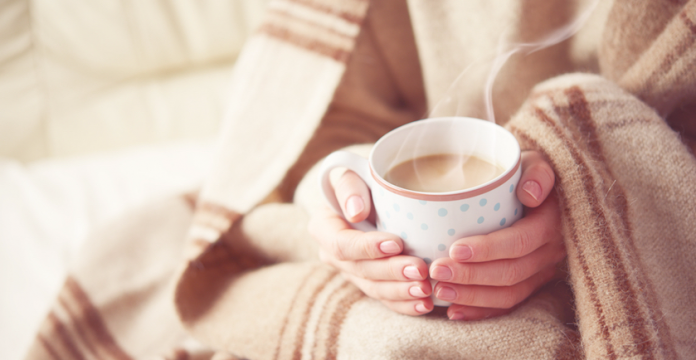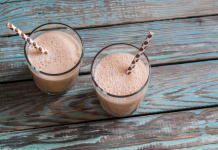
Do you have a child who is on the autism or ADHD spectrum who could benefit from a drug-free, supplement-free way to achieve calmness and sleep better? Would you like a safe, effective, non-drug way to relax and fall asleep? Maybe it’s time to try a weighted blanket.
Weighted blankets are blankets that are heavier than normal and are typically used for therapeutic reasons as an alternative to or along with medication. The most common conditions for which weighted blankets are used include autism, insomnia, stress, anxiety, and behavioral disorders. The majority of weighted blankets weigh between four and 30 pounds, depending on which part of the body they will be used for and the age and size of the individual.
Read about healing through the senses: Snoezelen therapy
How weighted blankets help behavioral challenges
People who may greatly benefit from using weight blankets are children and adults with autism or other disorders that can benefit from sensory integration therapy. This is a form of occupational therapy in which affected individuals learn how to regulate their emotions and behaviors. The approach is based on the theory that sometimes these individuals are hypersensitive to sensory stimulation, and that the weight provides a calming effect by providing “deep-touch pressure,” according to occupational therapist Teresa May-Benson. Some therapists use these blankets as part of their treatment programs.
To test this point, a placebo-controlled crossover study was conducted that involved 67 children (ages 5 to 17 years) with autism and severe sleep problems. They were randomly assigned to use either a commercially available weighted blanket or an identical usual weight blanket. Even though total sleep time, time to fall asleep, waking up less often, or behavioral outcomes did not differ between the two groups, the kids and their parents favored the weighted blankets when it came to subjective measures.
Several studies involving children with autism have not yielded positive results. One study appearing in Pediatrics, for example, used weighted blankets to help kids with autism and sleeping problems. The authors of the study used placebo blankets (filled with light plastic beads) and weighted blankets (filled with steel beads) and found no difference between the two groups of kids when it came to total sleep time, waking up in the middle of the night, and how long it took to fall asleep. Note, however, that there are anecdotal reports to the contrary from parents of autistic children, which suggests you may want to try this approach if you have an autistic child with sleep issues.
Using weighted blankets for anxiety
Weighted blankets can be an effective way to help manage anxiety in both children and adults. Experts believe that the additional weight offered by the blanket helps ground individuals, thus providing a calming effect. Grounding may facilitate the reduction of levels of cortisol, a stress hormone whose levels increase when we are anxious, stressed, or depressed.
For example, one study of anxiety involved the use of 30-pound weighted blankets for 32 adults who had been admitted to an acute inpatient mental health facility. Sixty-three percent of the participants reported lower anxiety levels after using the blankets, and 78 percent said they preferred using the blanket as a calming method.
Similarly, weighted blankets also simulate a type of therapy called deep pressure touch, in which therapists use their hands to apply pressure to areas of the body to reduce chronic stress and anxiety. Such pressure may also stimulate the release of two relaxation neurotransmitters, serotonin and dopamine, which not only alleviate anxiety but also help with sleep.
Read about foods to help toddlers sleep
How to choose a weighted blanket
Be sure to talk with a knowledgeable healthcare individual, such as your doctor or an occupational therapist, before you purchase and try a weighted blanket for yourself or your child. Generally, the recommended weight of a blanket for kids is 10 percent of their body weight plus 1 to 2 pounds, while for adults it is 5 to 10 percent of body weight. Use of weighted blankets for children younger than 7 or 8 years old usually is not recommended, according to therapist May-Benson.
Because overheating may be a factor, choose a weighted blanket that is made from natural fibers, as synthetic fabrics typically are warmer. In addition, if you have breathing or respiratory issues, circulation problems, trouble regulating your body temperature, or have a chronic health condition, it is essential that you talk with an expert before using a weighted blanket.
Since weighted blankets can be pricy (ranging from about $70 to $300 depending on size and material), you may want to make your own. Fortunately there are numerous tutorials online for D-I-Y weighted blankets.
Sources
Creasey N, Finley F. Do weighted blankets improve sleep in children with an autistic spectrum disorder? Archives of Disease in Childhood 2014 Nov 30; 98(11): 919-20
Gringras P et al. Weighted blankets and sleep in autistic children-a randomized controlled trial. Pediatrics 2014 Aug; 134(2): 298-306
Mullen B et al. Exploring the safety and therapeutic effects of deep pressure stimulation using a weighted blanket. Occupational Therapy in Mental Health 2008 Sept 8; 24(1): 65-89
Pappas S. Weighted blankets: harmless for adults, potentially dangerous for kids. Live Science 2017 May 31
Whelan C. Why you should use a weighted blanket for anxiety. Healthline 2017 April










